The lord and important retainers would have sat at the north end of the hall, and in the centre of the building was a large open hearth. Doors at the north end led to the lord’s private apartments, whilst at the south end there was access to a separate kitchen above an undercoft (John of Gaunt’s cellar), where ale, wine and food would have been stored.
- Leicester’s Franciscan friary was founded in the early 13th century and occupied a site south of Leicester Cathedral for 300 years
- Alderman Robert Herrick bought the friary site in the late 16th century. In his garden, he marked the site of King Richard III’s grave with an inscribed stone pillar
- Richard III was buried in the choir of the Grey Friars church in 1485. Archaeologists rediscovered the king’s remains beneath a Leicester city centre car park in 2012
Leicester’s Franciscan friary
Franciscan friars first arrived in Leicester in the early 13th century. Their friary occupied a large walled precinct south of St Martin’s Church (now Leicester Cathedral) and west of Leicester’s Saturday market place, between two important medieval thoroughfares, Friar Lane and St Francis’ Lane (Peacock Lane today).
The first reference to a friary building dates to 1255 when Eleanor, Countess of Leicester persuaded her brother King Henry III to grant oak trees to the friars to make ‘[choir] stalls and for panelling their chapel’, implying the near-completion of the choir of the church at this time. The nave of the church, with a north aisle was completed thirty-five years later in 1290. Other documented buildings include a chapter house, a refectory and an infirmary. The friary also had large areas of garden within its precinct and a cemetery was situated between the church and St Francis’ Lane.
In 1300, at least eighteen friars resided at Leicester and by the mid-14th century there may have been as many as 20-30 friars in the community. However, numbers may have begun to drop after the arrival of the Black Death in 1348 and by the early 16th century there were probably less than a dozen friars left.
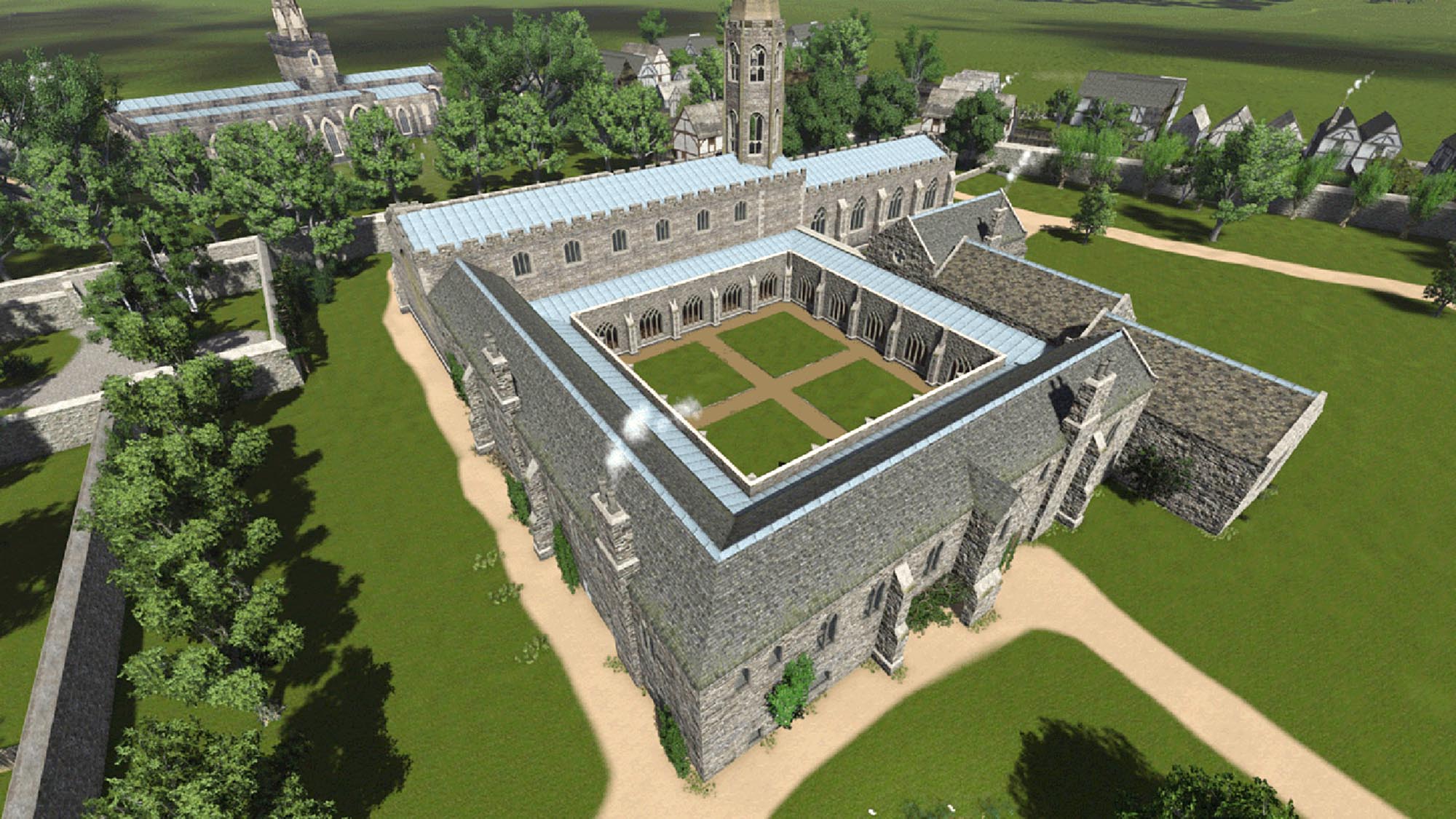
Why is it called Grey Friars?
Franciscan friars – named after their founder, the Italian St Francis of Assisi – were nicknamed Grey Friars because of the colour of their clothing, a gown of grey cloth and a belt of rope with three knots symbolising their vows. Their official title is the ‘Order of Friars Minor’.
Grey Friars and Richard III
Today, Grey Friars is best known as the original burial place of King Richard III. Following his death at the Battle of Bosworth in 1485, King Richard’s body was brought back to Leicester to be put on public display to prove that he was truly dead. This probably took place at the Newarke and the king’s body was subsequently given a simple Christian burial in the choir of the Grey Friars church.
Grey Friars and Henry VIII
Henry VIII ordered the friary to be demolished in 1538. The land was sold off, and over the centuries it was redeveloped and built on many times. By the mid-20th century, what had once been a religious friary had become a site for a school, council offices and a car park.
Rediscovering the friary
Archaeologists excavating at the friary site in 2012 and 2013, during the search for Richard III’s last known resting place, identified the friary’s chapter house, parts of the eastern cloistral range and the eastern end of the friary church, including the choir and the sanctuary. The evidence - wall lines, the remains of tiled floors, stone benches, choir stalls and other tombs – was used to reconstruct what the friary might have looked like.
Produced by De Montfort Universities acclaimed Digital Building Heritage Group, this short film shows a digital reconstruction of what Grey Friars Priory would have looked like.
In 2017, Historic England declared much of the site a Scheduled Ancient Monument, which means ‘a nationally important archaeological site that has protection against unauthorised change’.
What remains of the friary today?
Very little remains of the friary today. Richard III’s original grave and part of the church floor can be seen in the Richard III Visitor Centre. A small piece of stone wall, probably a boundary wall, can be seen in a private car park near to the Cathedral end of New Street.
A number of artefacts from the friary that were found during archaeological excavations can be seen in the 'Medieval Galleries' at Leicester Guildhall.
Gallery
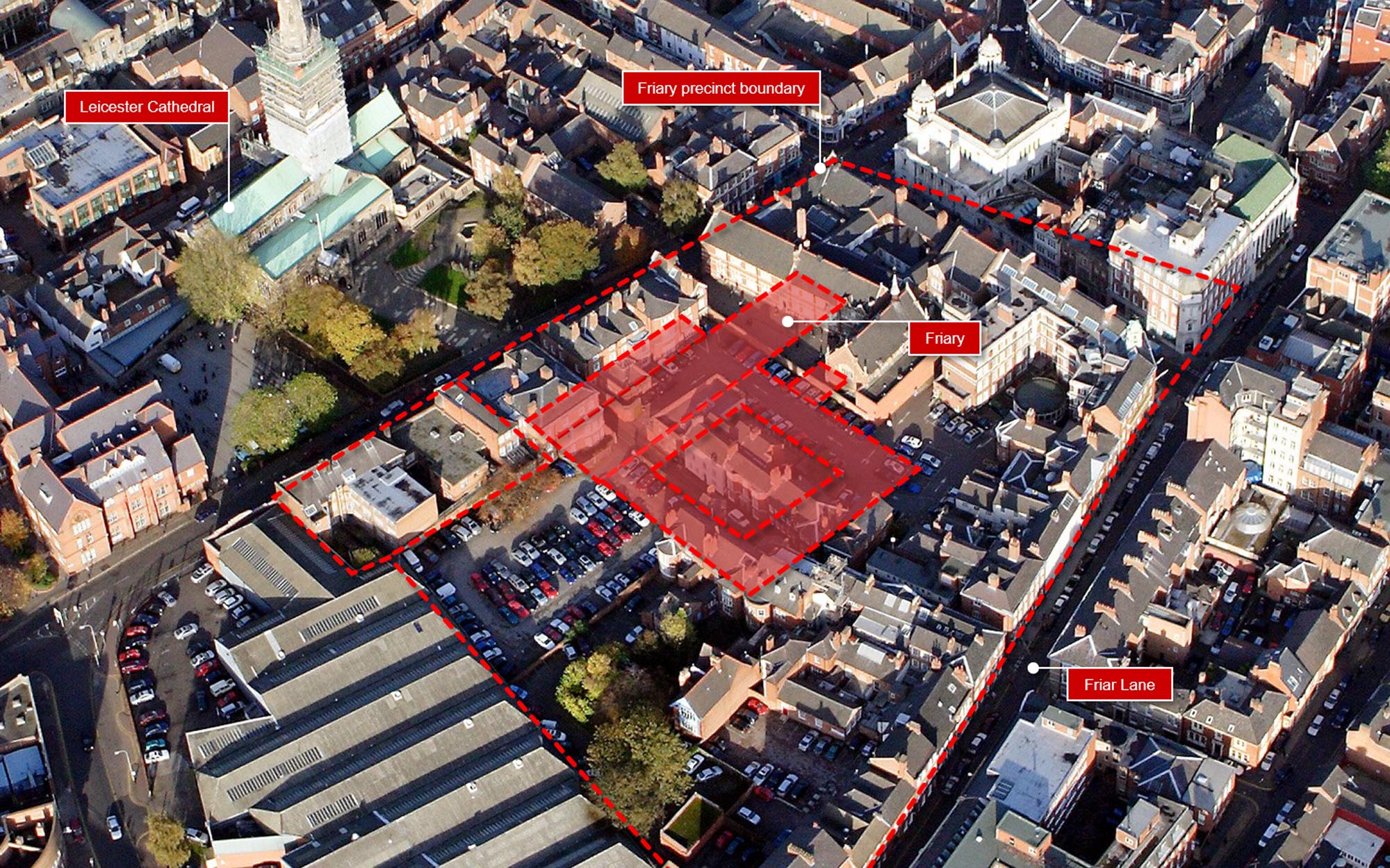
University of Leicester Archaeological Services
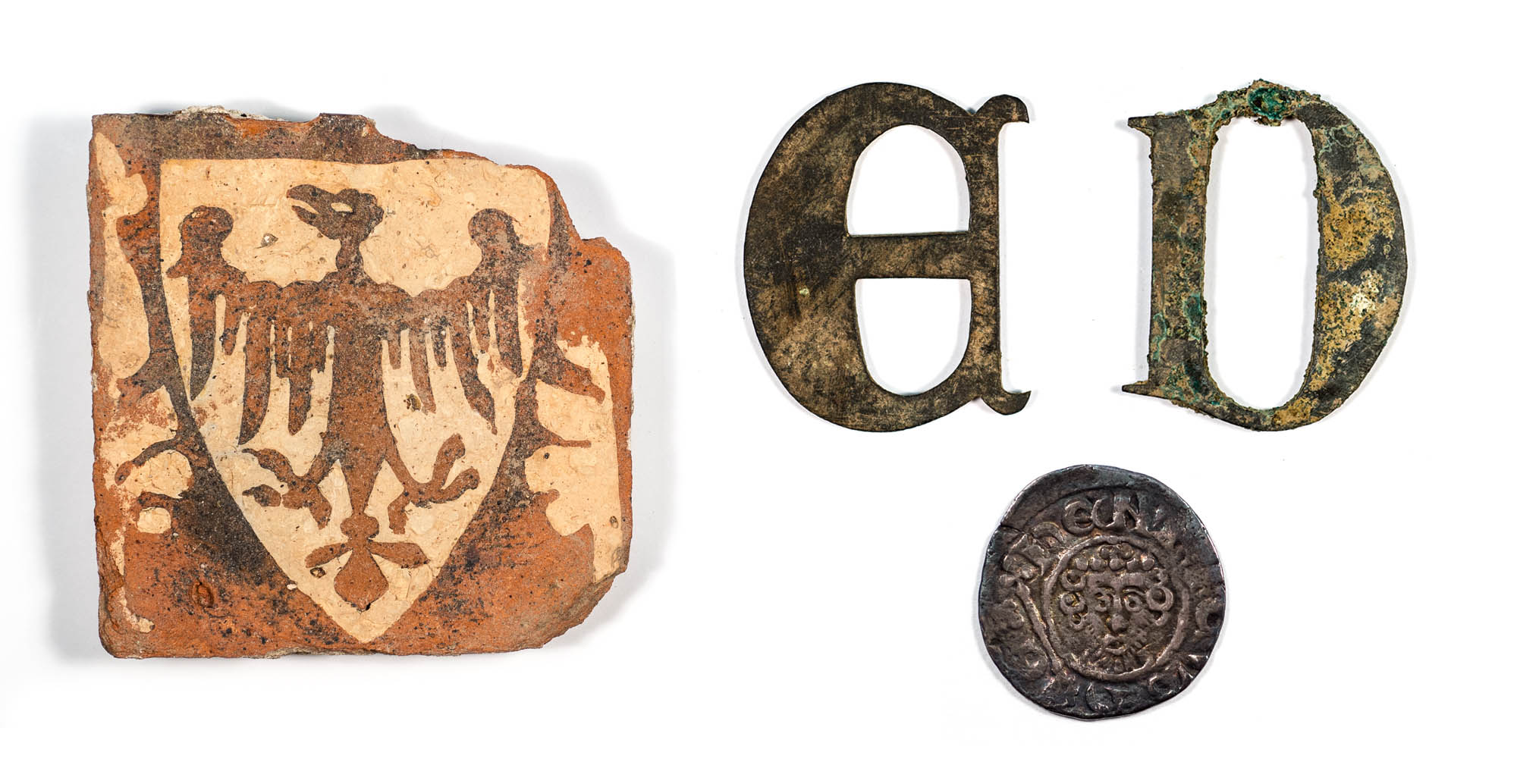
See artefacts like this at Leicester Guildhall
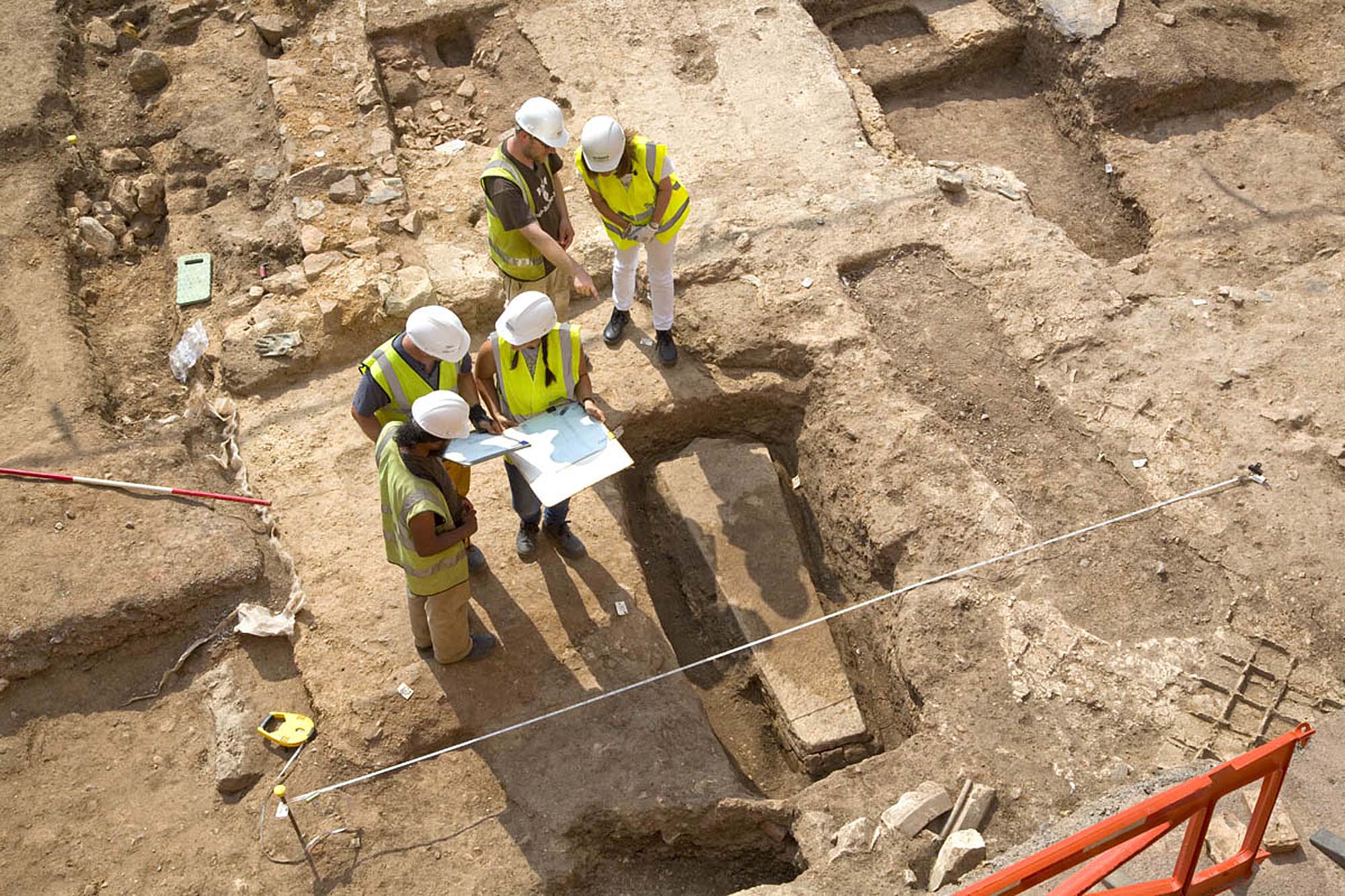
University of Leicester Archaeological Services
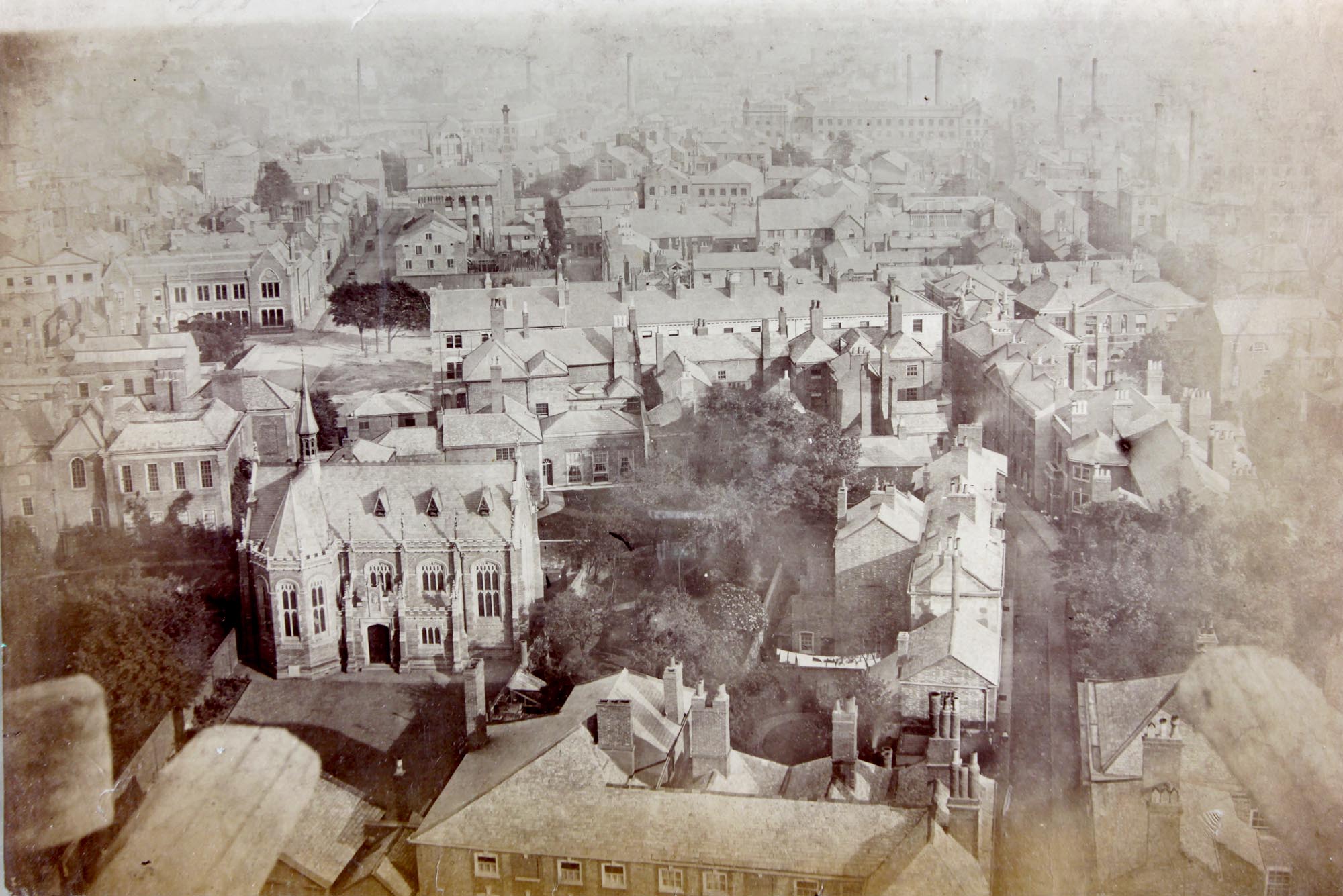
Leicester Record Office
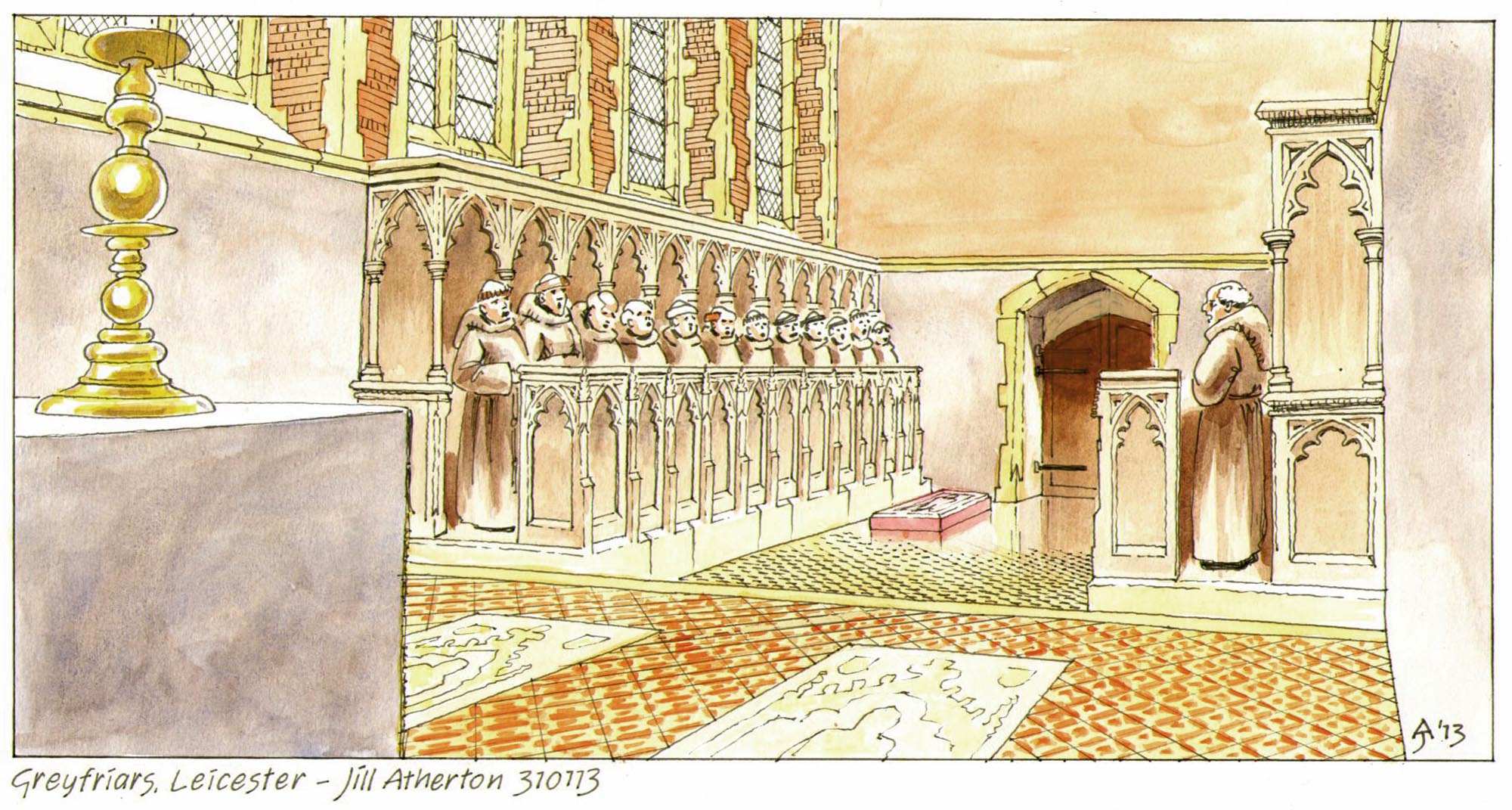
Jill Atherton / University of Leicester Archaeological Services

Mike Codd / University of Leicester Archaeological Services

University of Leicester Archaeological Services
Richard III
Roman Leicester
(47- 500) A military fort was erected, attracting traders and a growing civilian community to Leicester (known as Ratae Corieltauvorum to the Romans). The town steadily grew throughout the reign of the Romans.
Medieval Leicester
(500 – 1500) The early years of this period was one of unrest with Saxon, Danes and Norman invaders having their influences over the town. Later, of course, came Richard III and the final battle of the Wars of the Roses was fought on Leicester’s doorstep.
-
The Castle Motte1068

-
Leicester Cathedral1086

-
St Mary de Castro1107

-
Leicester Abbey1138

-
Leicester Castle1150

-
Grey Friars1231

-
The Streets of Medieval Leicester1265

-
Leicester Market1298

-
Trinity Hospital and Chapel1330

-
Bow Bridgecirca 1350

-
Church of the Annunciation1353

-
John O’Gaunt’s Cellar1361

-
St John's Stone1381

-
Leicester Guildhall1390

-
The Magazine1400

-
The Blue Boar Inn1400

-
The High Cross1577

Tudor & Stuart Leicester
(1500 – 1700) The wool trade flourished in Leicester with one local, a former mayor named William Wigston, making his fortune. During the English Civil War a bloody battle was fought as the forces of King Charles I laid siege to the town.
Georgian Leicester
(1700 – 1837) The knitting industry had really stared to take hold and Leicester was fast becoming the main centre of hosiery manufacture in Britain. This new prosperity was reflected throughout the town with broader, paved streets lined with elegant brick buildings and genteel residences.
-
Great Meeting Unitarian Chapel1708

-
The Globe1720

-
17 Friar Lane1759

-
Black Annis and Dane Hills1764

-
Leicester Royal Infirmary1771

-
New Walk1785

-
Freemasons’ Hall1790

-
Gaols in the City1791

-
Friars Mill1794

-
City Rooms1800

-
Development of Highfields1800

-
Wesleyan Chapel1815

-
20 Glebe Street1820

-
Charles Street Baptist Chapel1830

-
Glenfield Tunnel1832

-
James Cook1832

Victorian Leicester
(1837 – 1901) The industrial revolution had a huge effect on Leicester resulting in the population growing from 40,000 to 212,000 during this period. Many of Leicester's most iconic buildings were erected during this time as wealthy Victorians made their mark on the town.
-
Leicester Union Workhouse1839

-
Campbell Street and London Road Railway Stations1840

-
The Vulcan Works1842

-
Belvoir Street Chapel1845

-
Welford Road Cemetery1849

-
Leicester Museum & Art Gallery1849

-
King Street1850

-
Cook’s Temperance Hall & Hotel1853

-
Amos Sherriff1856

-
Weighbridge Toll Collector’s House1860

-
4 Belmont Villas1862

-
Top Hat Terrace1864

-
Corah and Sons - St Margaret's Works1865

-
Kirby & West Dairy1865

-
The Clock Tower1868

-
Wimbledon Works1870

-
The Leicestershire Banking Company1871

-
St Mark’s Church and School1872

-
Victorian Turkish Baths1872

-
The Town Hall1876

-
Central Fire Stations1876

-
Aylestone Road Gas Works and Gas Museum1879

-
Gas Workers Cottages1879

-
Leicestershire County Cricket Club1879

-
Welford Road Tigers Rugby Club1880

-
Secular Hall1881

-
Development of Highfields1800

-
Abbey Park1881

-
Abbey Park Buildings1881

-
Victoria Park and Lutyens War Memorial1883

-
Leicester Fosse FC 18841884

-
Leicester Coffee and Cocoa Company Coffee Houses1885

-
St Barnabas Church and Vicarage1886

-
Abbey Pumping Station1891

-
Luke Turner & Co. Ltd.1893

-
West Bridge Station1893

-
Thomas Cook Building1894

-
The White House1896

-
Alexandra House1897

-
Leicester Boys Club1897

-
Grand Hotel and General Newsroom1898

-
Highfield Street Synagogue1898

-
Western Park1899

-
Asfordby Street Police Station1899

-
Leicester Central Railway Station1899

Edwardian Leicester
(1901 – 1910) Electric trams came to the streets of Leicester and increased literacy among the citizens led to many becoming politicised. The famous 1905 ‘March of the Unemployed to London’ left from Leicester market when 30,000 people came to witness the historic event.
-
YMCA Building1900

-
The Palace Theatre1901

-
Pares's Bank1901

-
Coronation Buildings1902

-
Halfords1902

-
High Street1904

-
George Biddles and Leicester's Boxing Heritage1904

-
Municipal Library1905

-
Leicester Boys Club1897

-
The Marquis Wellington1907

-
Guild Hall Colton Street1909

-
Women's Social and Political Union Shop1910

-
Turkey Café1901

Early 20th Century Leicester
(1910 – 1973) The diverse industrial base meant Leicester was able to cope with the economic challenges of the 1920s and 1930s. New light engineering businesses, such as typewriter and scientific instrument making, complemented the more traditional industries of hosiery and footwear manufacturing.
-
Dryad Handicrafts1912

-
De Montfort Hall1913

-
Leicester During the First World War1914

-
Fox’s Glacier Mints1918

-
Statue of Liberty1919

-
Housing in Saffron Lane1924

-
Winstanley House1925

-
Housing in North Braunstone1926

-
Lancaster Road Fire Station1927

-
The Little Theatre1930

-
Saffron Hill Cemetery1931

-
Braunstone Hall Junior School1932

-
Former City Police Headquarters1933

-
Savoy Cinema1937

-
Eliane Sophie Plewman1937
-
City Hall1938

-
Athena - The Odeon Cinema1938

-
The Blitz in Highfields1940

-
Freeman, Hardy and Willis - Leicester Blitz1940

-
Leicester Airport1942

-
Leicester’s Windrush Generations1948

-
Netherhall Estate1950
-
Housing at Eyres Monsell1951

-
Silver Street and The Lanes1960

-
Bostik1960

-
Auto-Magic Car Park (Lee Circle)1961

-
University of Leicester Engineering Building1963

-
Sue Townsend Theatre1963

-
Central Mosque1968

-
Belgrave Flyover1973

Modern Leicester
(1973 – present day) Industry was still thriving in the city during the 1970s, with the work opportunities attracting many immigrants from all over the world. While industry has declined in recent years, excellent transport links have made Leicester an attractive centre for many businesses. The City now has much to be proud of including its sporting achievements and the richness of its cultural heritage and diversity.
-
Haymarket Theatre1973

-
The Golden Mile1974

-
Acting Up Against AIDS1976

-
Belgrave Neighbourhood Centre1977

-
Diwali in Leicester1983

-
Leicester Caribbean Carnival1985

-
Samworth Brothers1986

-
Jain Centre1988

-
Guru Nanak Dev Ji Gurdwara1989

-
King Power Stadium2002

-
LCB Depot2004

-
Curve2008

-
BAPS Shri Swaminarayan Mandir2011

-
Makers Yard2012

-
VJ Day 80th Anniversary2020

- Roman Leicester
- Medieval Leicester
- Tudor & Stuart Leicester
- Georgian Leicester
- Victorian Leicester
- Edwardian Leicester
- Early 20th Century Leicester
- Modern Leicester
















































































































































